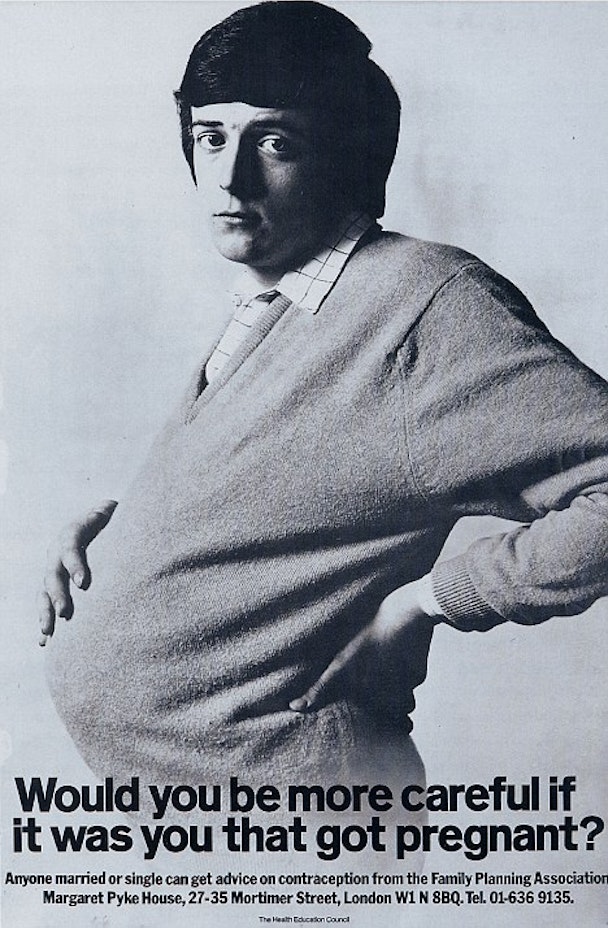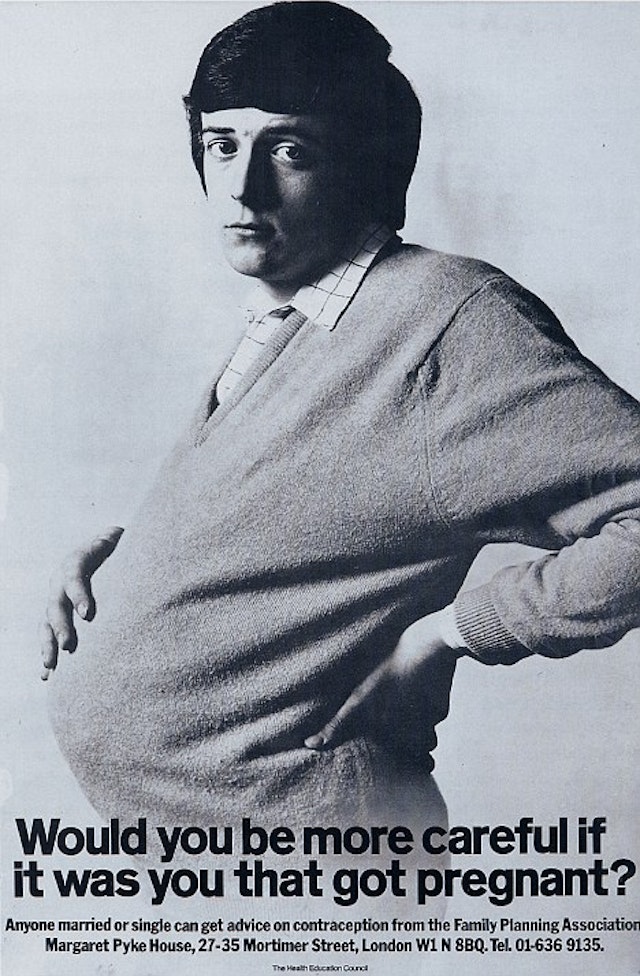Pregnant Man: how would today's marketers reimagine this classic ad campaign?
The Reimagining Advertising campaign, created in partnership with GumGum, is asking a panel of ten marketers how they would reimagine seminal ads from the pre-digital age to find out how today’s leading advertising thinkers would reinvent them with the current digital tools at their disposal.

In the fifth in the series, Nicole Yershon, director, innovative solutions, Ogilvy Group Advertising; Dom Burch, former senior director marketing innovation and new revenue, Walmart UK (Asda); Milton Elias, head of mobile & tech futures, OMD UK; and Ben Plomion, SVP marketing, GumGum reimagine the iconic Pregnant Man ad.
Sometimes ads are more than a piece of advertising – they’re messages that force people to question their assumptions. Case in point: The 1970 Pregnant Man ad created by CramerSaatchi, now Saatchi & Saatchi.
The ad, created for the Family Planning Association, succeeded because of its simplicity. It posed a simple question: ‘Would you be more careful if it was you that got pregnant?’.
Although the ad was meant for display in the waiting rooms of doctors’ offices, it found its way into Time magazine. Soon it was the topic of numerous editorials, earning it a Yellow Pencil at the 1970 D&AD Awards.
The ad also helped put its creative firm on the map. In the book Saatchi & Saatchi: The Inside Story, John Hegarty, who worked on the campaign, says: “The Pregnant Man was more than just a piece of advertising; it was the first time I had seen a piece of work that moved beyond the accepted boundaries our business operated in, commanding attention from a far wider group of people.”

How would our panelists reimagine this iconic ad?
Men can get pregnant: Nicole Yershon, director, innovative solutions, Ogilvy Group Advertising
Technology is changing so quickly, and that applies to biology as well. Today, people can change their gender, and that in turn, means men can get pregnant, as we’ve seen with Thomas Beatie, the world’s first pregnant man. Mr. Beatie, a trans man, gave birth to three children. You can see photos of him fully pregnant, just by Googling his name, or even “pregnant man.”
Rather than feature a manipulated image of a pregnant man, why not use a real one? I’d use Mr. Beatie as the real face of the pregnant man campaign. To raise awareness, I’d launch a multi-platform social media campaign, inviting young men to speak directly with Mr. Beatie about what it’s like to be pregnant. He could answer questions on Twitter, Facebook, and other channels to raise awareness of the importance of contraception.
Make them walk in their shoes: Dom Burch, former senior director marketing innovation and new revenue, Walmart UK (Asda)
To update this iconic ad, I’d use two global YouTube stars, Caspar Lee and Joe Sugg, who are known for challenging one another and ending up in silly situations. For this advert, Caspar challenges Joe to a rather daft YouTube contest involving condoms; Caspar fills a condom with water and drops it on Joe’s head. If he’s successful, Joe will end up with a full-faced condom mask.
Of course, Caspar loses the challenge, and as a forfeit, must spend a day in London wearing a pregnant prosthetic, and even attend a pre-natal class, all while sharing his experiences to both stars’ massive audiences on YouTube, Instagram, Facebook, Tumblr and Twitter.
Due to the duo’s fame, Caspar will certainly be recognized as he walked around, and fans would be welcome to create and share their own selfies with the pregnant star. In the pre-natal class, the two pranksters would hear (and share) what it’s like to really be pregnant and the responsibility it entails, prompting them to admit the importance of condoms.
The entire video would live permanently on the YouTube channels of both stars, and be linked to information on safe sex and where to get condoms.
Don’t leave it to the imagination – let them actually see it: Milton Elias, head of mobile & tech futures, OMD UK
The Pregnant Man ad would be really fun to execute in a more digitally creative way, and I’d approach it with a two-tiered strategy. First, I’d work with Clear Channel and JCDecaux to make use of big digital OOH screens with built-in face and gender recognition software, as well as Microsoft Connect, which can manipulate images and reflect them back in real time.
So as men in the right age group walked by, the screen would grab their image, make them look pregnant, and then ask if they’d be more careful if that could happen to them.
To take it up a notch, I’d borrow from a Tweet to Eat campaign we did for Walkers, in which free crisps were dispensed from select vending machines to consumers who tweeted ‘Walkers UK’. We could dispense free condoms from machines near OOH displays to consumers who interact with them in some way.
Finally, I’d launch a time-sensitive, geo-targeted mobile campaign in locations with a high concentration of pubs and bars. We’d send the messages out late in the evenings, when spontaneous sexual encounters tend to occur, directing recipients to locations where condoms are available, either for free or purchase. So the idea is to raise awareness at a time when people engage in those kinds of practices, and drive them to the source that fixes the problem in the first place.
Pledge not to be an idiot: Ben Plomion, SVP marketing, GumGum
To be fair, I had the advantage of reading the other ads and for this campaign, I’d pick up on Milton Elias’s idea. I would target single men on Facebook, Twitter, and so on. I’d grab their profile pictures, superimpose their faces onto the body of a pregnant man, and keep the same tagline, “Would you be more careful if this could happen to you?”.
But I’d also take it a step further by getting these men to take a pledge not to be an idiot. It could lead to a new Pledge Not to be an Idiot page or site, where men agree to do things like carry condoms in their wallets, and put a box of them in their nightstands to reduce the risk of being an idiot.
When they click the anti-idiot pledge, they have the option to include a pledge badge as part of their social media profiles. We’d work with Tinder and other hook-up sites in particular to make sure the pledge badge had a prominent location on profiles, to give fair warnings to women.
We can ask people to take the pledge across the web, and buttress the campaigns with vines of celebrities putting condoms in their wallets.
Content created with:

GumGum
GumGum is a contextual-first global advertising technology company that captures people’s attention, without the use of personal data. We believe that a digital...
Find out more
